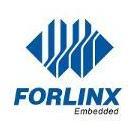Search the Community
Showing results for tags 'jh7110'.
-
As technology develops rapidly, smart devices play an increasingly important role in our lives. Have you ever wondered why your smartphone, computer, and other smart devices can run various complex software and applications? This is all thanks to the powerful processor architecture. Today, we will take you into an eagerly anticipated processor architecture - RISC-V. RISC-V originated from the University of California, Berkeley, and was created by a group of researchers including Andrew Waterman, Krste Asanović, and Yunsup Lee. Their vision is to break the closed design pattern of computer processors and provide an open and flexible instruction set architecture. Since its release RISC-V has received widespread attention in various fields and has become a highly praised architecture. Advantages of RISC-V: 1. Openness and freedom: RISC-V’s open-source allows anyone to use and customize it for free, without paying patent royalties. 2. Modularity and customization: RISC-V’s design allows developers to choose different modules and create custom instruction sets that meet specific needs. 3. Technological innovation: RISC-V’s openness encourages technological innovation and attracts the participation of many companies and research institutions. 4. Wide range of application fields: RISC-V can be used for embedded systems, IoT devices, servers, high-performance computing and other fields. RISC-V is an eagerly anticipated open-source instruction set architecture, with a wide range of application prospects. It represents the future direction of computer processor design, and its openness, freedom, and technological innovation make it have potential in multiple fields. To boost the development of RISC-V, Forlinx Embedded launched a new product - FET7110-C System on Module, which is the first product based on RISC-V architecture. FET7110-C SoM is based on StarFive’s 64-bit high-performance quad-core RISC-V JH7110 processor design and development, with high performance, multi-function, low power consumption characteristics, CPU stable working frequency 1.5GHz, Coremark score of 5.09 CoreMark/MHz, performance better than Cortex-A55. 7110 uses IMG BXE-4-32 MC1 architecture, provides powerful GPU processing capability, supports multi-channel video encoding and decoding, and supports rich functional interfaces such as 2 PCIe2.0, 2 Gigabit Ethernet, and 2 CAN2.0, making its application scenarios more extensive. In terms of power consumption, the FET7110-C SoM is divided into eight power domains that can be switched independently. By using software, the CPU frequency can be adjusted, allowing customers to dynamically control the power consumption according to different application scenarios. FET7110-C SoM is a versatile board for all industries and can be used in many industries such as industrial intelligence, smart surveillance, commercial electronics, smart home and power and energy. After rigorous testing, the FET7110-C SoM can provide stable performance support for customers' high-end applications. The emergence of RISC-V provides a new option. In the future, with the increasing demand for openness and customization, RISC-V is expected to continue to grow in different application fields. In particular, RISC-V is expected to gain more market share in embedded systems, IoT, education and research. Originally published at www.forlinx.net.
-
Forlinx has officially launched their latest System-on-Module, featuring the powerful StarFive JH7110 RISC-V chip. These versatile SoM and compatible carrier board are now available for order, catering to a wide range of applications including commercial, medical, and industrial automation. Recently, a few embedded products have emerged utilizing the same processor, including the VisionFive 2, Pine64, and Milk-V Mars. However, the FET7110 SoM will be the first product from Forlinx to feature the integrated Jinghong 7110 processor. See the JH7110 block diagram for reference. • JH7110 – 64-bit RISC-V, up to 1.5GHz (quad SiFive U74-RV64GC, up to 5.09 CoreMark/MHz) JH7110 block diagram The JH7110’s GPU integrates the IMG BXE-4-32 MC1 (up to 600MHz) which offers full support for mainstream APIs like OpenCL 3.0, OpenGL ES 3.2, and Vulkan 1.2. Regarding power consumption, Forlinx indicates that the JH7110 is segmented into eight independently switchable power domains. Additionally, the CPU frequency can be dynamically adjusted via software, allowing customers to fine-tune the frequency based on various application scenarios that require flexible control and power consumption. The JH7110 facilitates camera access through both MIPI-CSI and DVP interfaces, with ISP support. It enables video decoding capabilities of up to 4K@60fps and video encoding of 1080p@30fps. Moreover, the SoM supports HDMI (4K@30fps) and RGB (1080p@30fps) display output interfaces, along with MIPI-DSI (2K@30fps). Specifications listed for the FET7110-C SoM include: • Memory/Storage: ○ 2/4GB LPDDR4 RAM ○ 32GB eMMC 5.0 ○ 100 Mbps QSPI ○ SD 3.0/MMC 5.0 • Connectivity: ○ 2x GMAC for RMII/RGMII 10/100/1000 Mbps • Display/Audio: ○ 1x HDMI 2.0 (up to 4K@30fps) ○ 1x 4-lane MIPI DSI, (up to 2K@30fps) ○ 8-lane I2S PCM/TDM • Camera: ○ 1x 4-lane MIPI-CSI • Expansion: ○ 1x PCIe2.0x1, 2 PCIe2.0 controllers integrated w/ PHY • USB: ○ 1x USB 2.0 ○ 1x USB 3.0 • I/O Peripherals: ○ 6x UART, 7x I2C, 7x SPI ○ 1x SDIO ○ 8x PWM ○ 64x GPIOs ○ 2x CAN 2.0B (Up to 5Mbps) • Power: ○ 5V DC • OS: ○ Linux 5.15.0 • Mechanical: ○ 60 x 38mm ○ B2B connectors (3x 80-pin) Specifications listed for the OK7110-C development board include: • Memory/Storage: ○ 2/4GB LPDDR4 RAM ○ 32GB eMMC 5.0 ○ 100 Mbps QSPI ○ SD 3.0/MMC 5.0 • Connectivity: ○ 2x Gigabit Ethernet ports • Display/Audio: ○ 1x HDMI 2.0 port ○ 1x MIPI DSI ○ 2x Speakers ○ 1x Mic • Camera: ○ 1x MIPI-CSI • Expansion: ○ 2x PCIE 2.0 ○ 1x Micro SIM • USB: ○ 1x USB Type-C ○ 3x USB 3.0 • I/O Peripherals: ○ 2x CAN ○ 2x RS485 • Other Features: ○ 1x Power button, 1x Reset key ○ RTC battery • Power: ○ 12V DC (via barrel connector) • Mechanical ○ B2B connectors (3x 80-pin) These products are now available for ordering. Customers can find the product page for the FET7110-C SoM here.
-
- system on module
- riscv
-
(and 2 more)
Tagged with:

